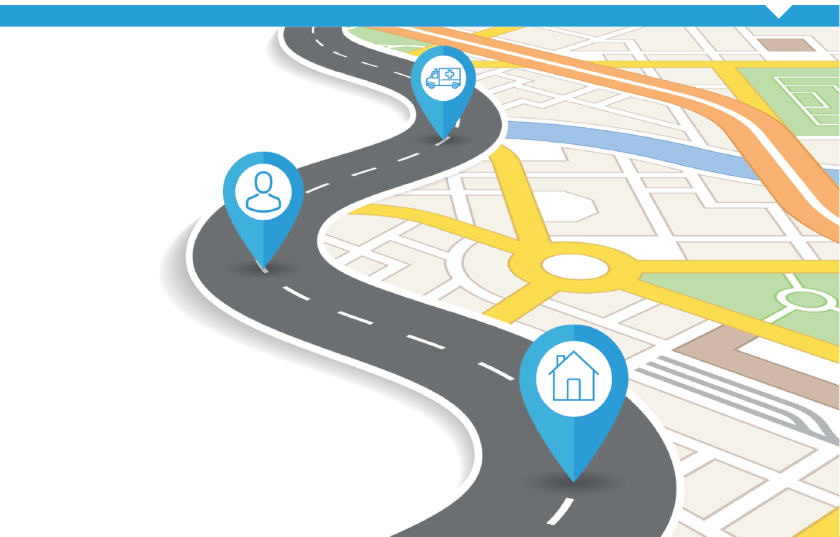-

Briefing: NHS Improving Non Emergency Patient Transport Review
-
10th August 2021
-
-
by Suzanne Lau
Policy Executive
Earlier this month, NHS England and NHS Improvement published its review of non-emergency patient transport services (NEPTS), setting out how a new national framework could make these services consistently more responsive, fair and sustainable. You can read that report here.
Over the decades, the community transport sector has provided countless journeys to all types of health settings – journeys that have persisted even throughout the difficulties of lockdown and patient isolation. On top of this, CT operators across the UK have been diversifying services to bring health resources to patients themselves, through medicine and prescription deliveries.
It is rewarding to see this vital contribution recognised in the NEPTS report, which not only references community transport throughout, but further sets out how the sector’s contribution can be better strengthened and integrated into the NEPTS network. Below, we share some of the report’s main headlines:
- CT is included under the 4 main classifications of NEPTS, under ‘non-specialist provision’
- The report discusses improving awareness of alternative travel options, including CT
- The strategy aims explicitly to ‘Support the growth of community transport, particularly volunteer recruitment and integration with transport co-ordination hubs; with innovative approaches developed in three pathfinder areas.’
- It is explicitly recognised that, while service providers need to maximise the utilisation of vehicles and invest in their staff to improve the use of NHS resources, that CT faces challenges to making that happen – ‘community transport has been under pressure from reductions in local authority funding and changing regulations.’
- The report dedicates a section to ‘Enabling access to community transport’, which discusses how volunteers and voluntary sector organisations can be integrated with provision to support people’s wider social and wellbeing needs by including measures to stimulate CT as a wider transport option for those not eligible for NEPTS and as part of non-specialist NEPTS provision for those who are eligible.
- As part of the above, the review implementation programme will focus on growing volunteer recruitment, supporting volunteer training and ongoing development, and exploring opportunities for integrating CT better into local co-ordination platforms
- The strategy discusses how procurement and commissioning processes need to be improved and states that non-specialist procurement frameworks must allow for potential new entrants to participate, including community transport, independent and SME providers and platforms
It was also rewarding to see that the report echoed much of what we discussed and recommended in our 2017 report – Total Transport: a better approach to commissioning non-emergency patient transport – and 2019 submission to the call for evidence on the Non-Emergency Patient Transport Service Review. As similarly highlighted in our reports:
- The NEPTS report discusses how eligibility for NEPTS is inconsistently applied across England and sets out the aim to create more detailed national eligibility criteria and consistent standards across England
- The NEPTS report highlights the need to improve commissioning and procurement practices
- In our 2019 submission, we discussed how CT offers a patient-centred approach to patient transport and recommended that there was greater patient involvement in co-creating their own travel solutions, which should include meeting with CT providers prior to deciding the configuration of vehicles; the NEPTS report similarly advocates a more patient-focused approach – ‘The appropriate type of transport should be a shared decision, reflecting people’s needs and preferences as well as the appropriate use of NHS resources. Patients should be empowered and supported to retain their independence and a personalised approach should be promoted.’
- CTA also recommended ‘a collaborative approach to NEPT which draws on the contribution of a broader range of stakeholders’; similarly, the NEPTS report states that ‘Procurement processes should involve key stakeholders…Specifications and contracts should enable collaborations between providers in delivering services, including lead provider models.’
Challenges
The paper is fairly ambitious in its approach to net zero, hoping to achieve a fully zero emission fleet by 2035. The paper only exempts ambulances and volunteers using their own vehicles from this expectation. It is therefore unclear what the expectations are for CT fleets. If they are included in the targets, technical and cost implications of compliance will inevitably arise.
Next steps
The report sets out a timeline for implementing key actions set out in the strategy and we aim to be actively involved in the conversations on updating the NEPTS eligibility criteria, supporting the innovation and growth of community transport and volunteers, as well as developing a dataset.

-
-
- About CTA
- /
- CTA Membership
- /
- CTWeek24
- /
- Policy & Research
- CommunitySolutions: A Manifesto for the Next UK General Election
- Our Campaigning Guide for Community Transport
- Our Policy Work
- Join Our Mapping England Passenger Survey
- Aneurin Bevan Transport to Health
- Climate Action in Scotland
- conneCTing England Programme
- Mapping Scotland Project
- Mapping Wales
- Mapping England
- Tackling Loneliness in England
- Healthy Communities in Scotland
- /
- Advice & Support
- /
- Training
- /
- Events
- /
